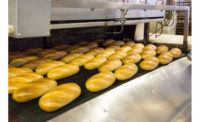A dramatic shift in the demographics of frequent restaurant diners, an unprecedented demand for a more sophisticated culinary food experience and explosive growth in at-home dinners eaten by Mellenials are creating lucrative new opportunities for the refrigerated and frozen foodservice industry.
While restaurant spending increased only 2% in 2013—and traffic was flat, per The NPD Group (NPD), Port Washington, N.Y.,—nine in 10 operators still plan to add new menu items in 2014, according to the “2014Restaurant Industry Forecast,” produced by the National Restaurant Association (NRA), Washington, D.C.
Fast causal remains the industry’s bright spot with sales up 10% and visits up 8% in 2013; fine dining visits rose 5%. Quickservice and retail foodservice visits were flat. Family dining/midscale and casual dining visits fell 4% and 2% respectively. And, family visits with kids under the age of 13 have declined steadily over the past five years.
Breakfast visits rose 3% last year—4% in quick-service; afternoon snack visits increased 1%. Lunch and dinner visits each declined 1%, reports NPD.
NRA’s forecast study projects dollar sales in table-service restaurants will grow 2.6% in 2014, with limited-service restaurants to grow 4.4%. Hotel restaurants, hospital/nursing homes, retail-host restaurants, snack/non-alcoholic bars and social caterers are expected to enjoy gains in excess of 5%; manufacturing/industrial plants and mobile caterers over 4%.
Who is dining out and why
Baby Boomers and seniors now make more visits to every segment of the restaurant business than their younger counterparts. Over the last five years, restaurant per capita meals and snack occasions for those aged 18-47 fell from 240 visits per person per year in 2008 to 211 in 2012, explains NPD.
With younger diners historically being the heaviest restaurant users, expect operators to quickly tailor menus to better meet the food preferences of older adults.
Cut-backs by younger adults—who have also historically driven the restaurant dinner sector—have caused a loss of over 650 million dinner visits since 2006. Watch for operators to cater to those aged 48-plus to revive dinnertime traffic. NPR reports those aged 55-64 are the highest per capita spenders at restaurants.
Most important, a substantial and growing proportion of Mellenial and lower-income consumers now report they usually prefer to order takeout rather than dine in at restaurants,according to Chicago-based Technomic’s “2013 Takeout & Off-Premise Dining Consumer Trend Report.”
Half of those aged 25-44 bought a prepared meal from retail four or more times per month in 2013, with one in five of all consumers purchased weekly, according to Technomic’s “2013 Retail Meal Solutions (RMS) Consumer Trend Report.”
Adults aged 18-24 are the most likely to buy chilled meals; 53% vs. 39% of the general population, reports Technomic’s RMS report.
Meatier, spicier and ethnic prepared foods will help attract male shoppers, which now accounts for 40% of all grocery shoppers. In fact, 52% of dads with kids at home do the household grocery shopping, per Nielsen, New York.
Kid-specific chilled/fresh prepared deli meals are another growth opportunity. One in five shoppers bought their last fresh prepared deli meal for a child under age 12, with 10% for a kid aged 13-18, per Technomic’s RMS report.
Among prepared deli items, dips/spreads volume grew 16% for the year ended March 29, followed by sides (11%); snacks and prepared chicken (each 9%); breakfast foods (6%); appetizers (5%); sushi, sandwiches and platters (4%); entrées (3%); desserts, salads and soups (each 2%) and pizza (1%), according to Nielsen Perishables Group “Fresh Facts.”
Unique deli items for breakfast jumped 13.6%, unique preparations for beef, ham, vegetables and Mexican entrées 11%, unique snacks 9% and prepared fresh fish 10%, per Nielsen.
Six in 10 deli operators plan to enhance their rotisserie programs in 2014 with items such as sandwiches (58%), catering (53%), premium brands (41%), soup stations (26%), sushi (25%), side dishes (24%), hot/cold bars (23%), antipasto/pasta bars and concept food stations like Asian-themed or carving stations (12%) according to a survey conducted by Progressive Grocer.
Rice, Chinese food, salads, eggs, beans, hamburgers, potatoes, vegetables, sweets and meat cuts are the foods consumers would most like to see upscaled, according to “2013 Compass Report,” produced by Hartman Group, Bellevue, Wash.
New foods/drinks carrying a restaurant or chef’s endorsement enjoyed an average 17% lift in sales in year, says the “2013 New Product Pacesetter Report,” by Chicago-based Information Resources, Inc.
In 2013, 41% of consumers entertained guests at home, up from 35% in 2012, according to the Specialty Foods Association, New York.
According to Technomic’s “December 2012 Parties Off-Premise Report,” 42% of those surveyed planned to serve finger food/hors d’oeuvres at their next home event, 40% sandwiches, 38% desserts and 36% everyday foods such as pizza, wings or potato salad. One-quarter planned to serve bulk salads, 24% entrées and 22% a “create your own buffet.”
Menu markers
Banh Mi, lobster rolls, flatbread, Muffaletta, pulled pork, brisket, tortas, Shrimp Po Boy and Cuban were among the fastest growing restaurant sandwiches in 2013, according to Datassential, Chicago. Brioche, artisan, pretzel, flatbread and ciabatta were the fastest growing sandwich carriers.
Two-thirds (65%) of diners say Cajun cuisine is now mainstream, 64% Greek, 63% French, 62% Thai, 59% Indian and 55% Tex-Mex, Spanish or German, according to Technomic’s “2012 Ethnic Flavors Report.”
Caribbean, Creole, Cuban, Hawaiian, Korean, Mediterranean, Puerto Rican, Szechuan and Vietnamese are among the second tier of emerging ethnic dining opportunities, per Technomic.
High-end chefs from the American Culinary Federation (ACF), Augustine, Fla., cite Peruvian, Korean, Southeast Asian, Thai, Vietnamese, Malaysian and regional ethnic and ethnic fusion as trendy for 2014, according to NRA’s “What’s Hot 2013 Chef Survey.”
Panna cotta was the fastest growing dessert on restaurant menus in 2013, along with coconut cake, lava cake, churros, gelato and vanilla custard, reports Datassential.
Whole-grain items, fruit/vegetable sides, oven-baked items and ethnic-inspired main dishes are among the important new directions for kids’ restaurant menus in 2014, per NRA.
The cut and the breed (e.g., Berkshire pork or Angus beef) are the top factors defining premium quality for meats for 66% of consumers, while 32% only bought natural/organic meat in 2014, per “Power of Meat,” produced by the Food Marketing Institute, Arlington, Va.
New cuts of meat, such as Denver steak, pork flat iron and teres major, gourmet sandwiches and vegetarian entrées are other hot center-of-the-plate culinary trends, per ACF chefs.
Shrimp, tuna, salmon, tilapia, Pollock and Pangasius are the most consumed fish per the National Fisheries Institute, while lesser known species such as mackerel, bluefish and redfish are grabbing attention,
Non-wheat noodles/pasta, quinoa, Black, Forbidden and Red rice, pickled vegetables and fingerling potatoes are among the trendy side dishes for 2014, per NRA.
Charcuterie, vegetarian, ethnic street foods such as tempura and kabobs, ethnic dips such as tabbouleh, baba ganoush and tzatziki, classic bite-size hors d’oeuvres and flatbread appetizers are trendy for 2014, per ACF chefs.
Bread appetizers such as garlic bread, bread sticks and cheese bread appeal to more adults than any dip, including salsa, seafood, spinach/artichoke and cheese, per Technomic’s “2013 Starters, Small Plates Consumer Trend Report.”
Breaded vegetables and quesadillas are of interest to more than half of adults, followed in popularity by stuffed mushrooms, chicken skewers, mini meatballs, fried wantons, Crab Rangoon and stuffed jalapenos, per Technomic.
Sriracha, truffle oil, hoisin, cilantro lime and sweet chili are among the fastest growing appetizer sauces, according to Datassential.
Mediterranean, Buffalo chicken, pesto BBQ chicken, Sicilian and taco are among the fastest-growing pizza varieties in restaurants, per Datassential.
In restaurants, Brioche French toast, flatbread, parfaits, panini, frittata and chilaquiles are among the fastest-growing breakfast items, explains Datassential. And, one-quarter of adults would like to see more ethnic items at breakfast time, per Technomic’s “Global Flavor Report.”
A serving of vegetables claim is important to two-thirds of diners who buy fresh soup, all-natural for half, per Technomic’s “2013 Left Side of the Plate Consumer Trend Report.”
Bourbon/whiskey, ginger, lemon butter, wine, sesame and béarnaise sauce are becoming more mainstream for chicken, pork or steak. Wasabi, wine, garlic and Asian sauces are now popular for seafood dishes. Creamy curry and Gorgonzola sauces are fast emerging in Italian cuisines, per Technomic’s “2013 Flavor Consumer Trends Report.”
Sriracha, chimichurri, aioli, yuzu, queso fresco, habanero, Thai chili, bresaola, tzatziki sauce, pappardelle, manchego, churrasco and olive tapenade are among the fastest-growing ethnic flavors on non-ethnic menus, per Datassential.
Healthy does it
Mellenials are most likely to choose a restaurant for the healthfulness of the menu (31% very often or often), 45% aged 18-34 consider the healthfulness of prepared meals at retail vs. 38% on average, reports Technomic’s “2012 Generational Consumer Trends.”
Made with fresh vegetables, all-natural, lower fat, lower calorie and baked not fry top the list of health attributes that would most likely persuade shoppers to buy fresh deli prepared foods, reports “2014 What’s in Store?” report, produced by The International Dairy-Deli-Bakery Association, Madison, Wis.
Calorie levels in the 400-600 range most appeal to consumers as a low-calorie meal, reports “2013 Healthy Dining Trends – US,” produced by Chicago-based Mintel.
CLICK HERE to learn about cold food trends in the retail market.




